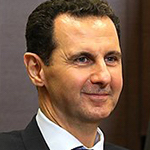|
|
Recent research from Wells Fargo suggests that 81 percent of American companies expect their international business activity to increase in the next year, with expectations of international revenue surging to 68 percent.
Factors such as global diversity in the C-suite make a business more likely to optimize global growth, moving away from the fear of risk and placing value on working with partners and stakeholders to seize international opportunities.
|
|
Driving international revenue is dependent on global marketing and localization. To achieve international brand growth, companies must push forward their strategy with the help of executives in influential positions, and reach and inspire international customers with innovative ideas to collectively drive their international revenues.
The move from an international communications strategy to something niche and localized is an attractive prospect for brands. Success in one market might not be directly translating into success in another country, putting the spotlight on an untapped demand for localized content. Similarly, a new audience closer to home may have been identified by marketers, raising the question of how to effectively reach them.
Whatever the reason, the demand for localized coverage has never been greater. A recent survey found that 79 percent of customers now expect personalization from brands and 66 percent of them welcome email marketing that targets them based on previous actions. This provides great opportunities for brands that want to go local on a global scale.
As with any change in communications direction, the shift should be approached with great detail. It’s not simply about taking a blueprint and making it fit a new situation—it’s about tailoring success to target markets.
Think global, act local
Customers are more digitally savvy and globally connected than ever before. Positioning globally relevant content is particularly important, and sometimes, these campaigns can miss out on the true individuality of local markets.
Marketers need to take care with the political, social and cultural meanings of their locations, as well as paying particular attention to the translation of slogans and the language barrier. Marketers should collaborate with local influencers to overcome these potential problems, ensuring that their global campaigns have a local and geographically specific feel.
Hybrid teams
Global and local teams need to come together to make a campaign a success. A good working relationship should be in place, with key strategy areas and objectives managed and led by individuals on the ground in relevant locations. The role of a chief communications officer is to manage reputational issues and the overall strategy of the campaign, guiding direction in a complex consumer landscape. It’s only with this structure that brands can get an honest feel about what is working and what the needs of their target customers are.
Digital and media approach
Brands should be aware of the media landscape in a market, and in particular, the dominance of digital and hyperlocal outlets. Marketers should consider being inventive with their social media, involving local stakeholders to collaborate on videos and mobile content, and use niche media to target their message alongside more traditional communication strategies.
Brands would be wise to also consider tailoring landing pages to location, using local imagery and local people as part of their campaigns. The same strategy also works well for social media pages, with brands such as Ben and Jerry’s using pages for regional markets effectively to capitalize on growth and customers.
The Johnnie Walker “Keep Walking” campaign is a good example of a global campaign with a local feel, with marketers using culturally relevant quotes to connect with consumers across many global markets, and turn the brand into one that is globally recognized.
Consistency
To transfer a successful local campaign to one on a global scale, marketers need to ensure consistency across all aspects of strategy. Branding and statement positioning shouldn’t be compromised, and consistency of key points, USP and messaging should be protected.
Brands should use case studies of success to show how their achievements on a local level can be transferred to a larger scale. These stories of transformation and problem solving should be included as part of the overall strategy, personalized to location in order to set a brand’s new product or service apart from competitors in the market.
Analytical data
Making use of analytical data to assess where to focus efforts is a key priority for marketers looking to make global gains. By focusing on top traffic sources, keyword searches and shares on social media, marketers can see which messages resonate with particular groups, enabling them to tailor content for specific actions and shift strategy in real-time.
Similarly, marketers can use this data to efficiently monitor the effect their communications strategy has on actions like purchases, store visits, website clicks and social follows.
How you will make a difference
Above all, it is important that marketers determine how their product or service helps to solve problems and effect real change in the lives of consumers. Big brands like Unilever focused on issues that mattered to customers. Sustainability is one of these, and the company found that campaigns with eco-friendly messaging delivered half of the company’s growth in 2015. Engagement at scale is a key indicator of a successful global campaign.
With brands keen to attract the savvy, global customer, a global communications strategy will become more important than ever before.
A hybrid team, focused on identifying cultural authenticity through brand consistency, is key to a campaign’s success. In order to meet the demand for localized content, marketers should work with well-known influencers, creating content that appeals to consumers on a personalized level but at the same time connects with our wider world. This “think global, act local” approach will help brands to gain international brand coverage and drive commercial success.
***
Lindsey Carnett is CEO and President of Marketing Maven, a bicoastal integrated communications agency with international clients accounting for 30 percent of its customer base. She started her career as Marketing Director for a Scandinavian bioscience company. She can be reached at [email protected].

 Lindsey Carnett
Lindsey Carnett

 Edelman is providing communications support to Panama’s Ministry of Commerce and Industries under an agreement capped at $97,100 per month.
Edelman is providing communications support to Panama’s Ministry of Commerce and Industries under an agreement capped at $97,100 per month. Ballard Partners has recruited State Department veteran Matt Bryza as a senior policy advisor.
Ballard Partners has recruited State Department veteran Matt Bryza as a senior policy advisor. Teneo has extended its contract with the Salama Bint Hamdan Al Nahyan Foundation for an additional four months to July 31, adding another $1.8M in fees to the New York firm’s coffers.
Teneo has extended its contract with the Salama Bint Hamdan Al Nahyan Foundation for an additional four months to July 31, adding another $1.8M in fees to the New York firm’s coffers. The Syrian Kurdish militia recruits Jim Dornan Strategies to press Congress for continued support in their battle against ISIS and Syrian president Bashar Assad.
The Syrian Kurdish militia recruits Jim Dornan Strategies to press Congress for continued support in their battle against ISIS and Syrian president Bashar Assad. The Government of Hungary has hired Strategic Improvisation Inc. to generate positive media coverage and combat negative press coverage of the Central European country. (6 reader comments)
The Government of Hungary has hired Strategic Improvisation Inc. to generate positive media coverage and combat negative press coverage of the Central European country. (6 reader comments)


 Have a comment? Send it to
Have a comment? Send it to 
No comments have been submitted for this story yet.